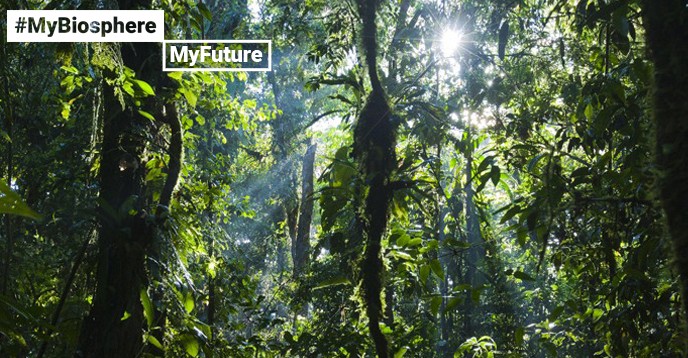focus_mg_7429_oxapampa_sernanp.jpg

The Asháninka people have developed projects to support sustainable consumption and resource management in the Oxapampa- Asháninka -Yanesha biosphere reserve, their ancestral home in the Amazon. Although classified as a biodiversity hotspot, the region is under intense pressure from human activities such as deforestation and overfishing of tropical fish, which are endangering local species. The projects allow the Asháninka people to address this threat while improving their income and quality of life. This type of grassroots effort for sustainable development represents the aspirations of UNESCO’s World Network of Biosphere Reserves, which are reflected in the Organization’s My Biosphere, My Future campaign (#MyBiosphere) that was launched at the 4th World Congress of Biosphere Reserves in Lima today.
Since 2013, the Asháninka Association of Integrated and Sustainable Fisheries (Asociación Asháninka Productores de Peces Integral Sostenible - APIS), comprising 20 families living in the Oxapampa-Asháninka-Yanesha biosphere reserve, installed a laboratory to breed paco fingerlings (Piaractus brachypomus) for consumption and sale. The project is part of a Programme of Sustainable Economic Activities (PAES) of the Peruvian National Service of Protected Natural Areas (SERNANP).
The creation of this laboratory has allowed APIS members to integrate their traditional with aquaculture techniques and funding management to address unsustainable overfishing and poaching that is putting pressure on local species. They have now set new goals to share their experience with other local communities and promote sustainable development. Thus in 2014 and 2015, part of the fingerling production (out of 460,000 fingerlings) were distributed to other indigenous communities in the area, to replicate the APIS experience.

Indigenous communities, including the Yánesha, Asháninka and Ashéninka peoples (representing over 8,000, 10,800 and 99 habitants respectively) have lived in the Oxapampa-Asháninka-Yanesha biosphere reserve since time immemorial by fishing and hunting in harmony with nature. The human-induced pressures that are threatening the biosphere reserve’s biodiversity are also threatening their way of life, as natural resources decline and disaster-related risks increase. These risks include landslides, floods and intensive use of land and aquatic resources.
This natural treasure, covering 1,800,000 hectares is part of one of our planet’s most important lungs: the Amazon, which is suffering from years of intensive exploitation and the impacts of climate change. The issues identified by the managers of the biosphere reserve, SERNANP, include massive and selective logging, over-fishing and hunting, migratory agriculture and unsustainable use of agrochemicals.
Biosphere reserves are true laboratories of sustainable development, working to develop solutions to reconcile biodiversity conservation, economic development, research and education. Initiatives like the APIS project offer alternative solutions that are in line with these principles and serve to implement the 2030 Agenda for Sustainable Development.
Oxapampa-Asháninka-Yanesha was added to the World Network of Biosphere Reserves by the Man and the Biosphere Programme (UNESCO-MAB) in 2010 in recognition of the urgent need to promote collaboration between local authorities and communities to improve these communities’ quality of life while protecting local biodiversity sustainably. The World Network of Biosphere Reserves comprises 651 sites in 120 countries. The Network is meeting in Lima, Peru, on 14- 17 March 2016 to elaborate an Action Plan for biosphere Reserves over the next 10 years.
Transforming our world: the 2030 Agenda for Sustainable Development
This initiative contributes to the following Sustainable Development Goals:
- Goal 15. Protect, restore and promote sustainable use of terrestrial ecosystems, sustainably manage forests, combat desertification, and halt and reverse land degradation and halt biodiversity loss
- Goal 12. Ensure sustainable consumption and production patterns
- Goal 8. Promote sustained, inclusive and sustainable economic growth, full and productive employment and decent work for all
